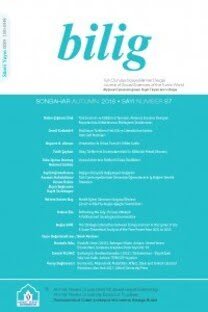Long-Term Changes in the Creation of New Cash Waqfs in Istanbul
Long-Term Changes in the Creation of New Cash Waqfs in Istanbul
Cash waqf, Ottoman Empire, Istanbul waqf deed, benefactors.,
___
- Akdağ, Mustafa. Türk Halkının Dirlik ve Düzenlik Kavgası. Bilgi Yayınevi, 1975.
- Aydın, Bilgin, et al. İstanbul Şer‘iyye Sicilleri Vakfiyeler Kataloğu. İSAM Yayınları, 2015.
- Baer, Gabriel. “Women and Waqf: An Analysis of the Istanbul Tahrir of 1546.” Asian and African Studies: Journal of the Israel Oriental Society, vol. 17, no. 1-3, 1983, pp. 9-27.
- Boyar, Ebru, and Kate Fleet. A Social History of Ottoman Istanbul. Cambridge University Press, 2010.
- Coşgel, Metin, and Boğaç Ergene. The Economics of Ottoman Justice. Cambridge University Press, 2016.
- Crecelius, Daniel. “Incidences of Waqf Cases in Three Cairo Courts: 1640-1802.” Journal of the Economic and Social History of the Orient, no. 2, 1986, pp. 176-89.
- Çizakça, Murat. Risk Sermayesi Özel Finans Kurumlarıve Para Vakıfları. İslami İlimler Araştırma Vakfı (İSAV) Yayınları, 1993.
- Erdoğan, Öner. İstanbul Şehremâneti (Belediyesi)’nin Kuruluşu ve 1917 Yılı Bütçesi. TC Maliye Bakanlığı Strateji Geliştirme Başkanlığı Yayınları, Yayın no. 2008/386.
- Ergenç, Özer. XVI. Yüzyılın Sonlarında Bursa: Yerleşimi, Yönetimi, Ekonomik ve Sosyal Durumu Üzerine bir Araştırma. Türk Tarih Kurumu Yayınları, 2006.
- Genç, Mehmet. “Klasik Osmanlı Sosyal-iktisadi Sistemi ve Vakıflar.” Unpublished paper, 2020.
- Parker, Geoffrey. Global Crisis: War, Climate Change and Catastrophe in the Seventeenth Century. Yale University Press, 2013.
- Gerber, Haim. “The Waqf Institution in Early Ottoman Edirne.” Asian and African Studies: Journal of the Israel Oriental Society, vol. 17, no. 1-3, 1983, pp. 29-45.
- Kuran, Timur. “The Provision of Public Goods under Islamic Law: Origins, Impact, and Limitations of the Waqf System.” Law and Society Review, no. 4, 2001, p. 841–98.
- Kurt, İsmail. Para Vakıfları: Nazariyat ve Tatbikat. Ensar Neşriyat, 1996.
- Mandaville, Jon E. “Usurious Piety: The Cash Waqf Controversy in the Ottoman Empire.” International Journal of Middle East Studies, no. 3, 1979, p. 289-308.
- Mantran, Robert. İstanbul Tarihi. İletişim Yayınları, 2001.
- Özcan, Abdülkadir (ed.), Anonim Osmanlı Tarihi (1099–1116/1688–1704).Türk Tarih Kurumu Basımevi, 2000.
- Öztürk, Nazif. Türk Yenileşme Tarihi Çerçevesinde Vakıf Müessesesi. Türkiye Diyanet Vakfı Yayınları, 1995.
- Orbay, Kayhan. “Imperial Waqfs within the Ottoman Waqf System.” Endowment Studies 1, no. 2, 2017, p. 135-53.
- Özcan, Tahsin. Osmanlı Para Vakıfları: Kanunı Dönemi Üsküdar Örneği. Türk Tarih Kurumu Yayınları, 2003.
- Peri, Oded. “Waqf and Ottoman Welfare Policy.” Journal of the Economic and Social History of the Orient, no. 2, 1992, p. 167-86.
- Tabakoğlu, Ahmet. Türk İktisat Tarihi. Dergâh Yayınları, 2000.
- Yediyıldız, Bahaeddin. “Türk Vakıf Kurucularının Sosyal Tabakalaşmadaki Yeri 1700–1800.” Osmanlı Araştırmaları, no. 3, 1982, pp. 143-64.
- ISSN: 1301-0549
- Yayın Aralığı: Yılda 4 Sayı
- Başlangıç: 1996
- Yayıncı: Ahmet Yesevi Üniversitesi
Biyografi Yazma Geleneği ve Cumhuriyet Sonrasında Biyografi Sözlükleri
Long-Term Changes in the Creation of New Cash Waqfs in Istanbul
Kültürel Kavramsallaştırma Örneği: Eski Uygur Sivil Metinlerindeki Örü Kodı Bol- Yapısı Üzerine
Turkey’s Security Policy towards Northern Syria and Iraq amid Regional Chaos (2011-2019)
XI.-XII. Yüzyıllar Eski Türk Dili Söz Varlığının Divânu Lugâti’t-Türk’teki İfadesi
Uygur Türkleri Üzerinde Dijital Gözetim
Haldun NARMANLIOĞLU, Tuğçe İYİGÜNGÖR
Bir Mikro Tarih Anlatısı Olarak Ahtem Seitablayev Sineması’nda Kırım Tatar Toplumunun Temsili
